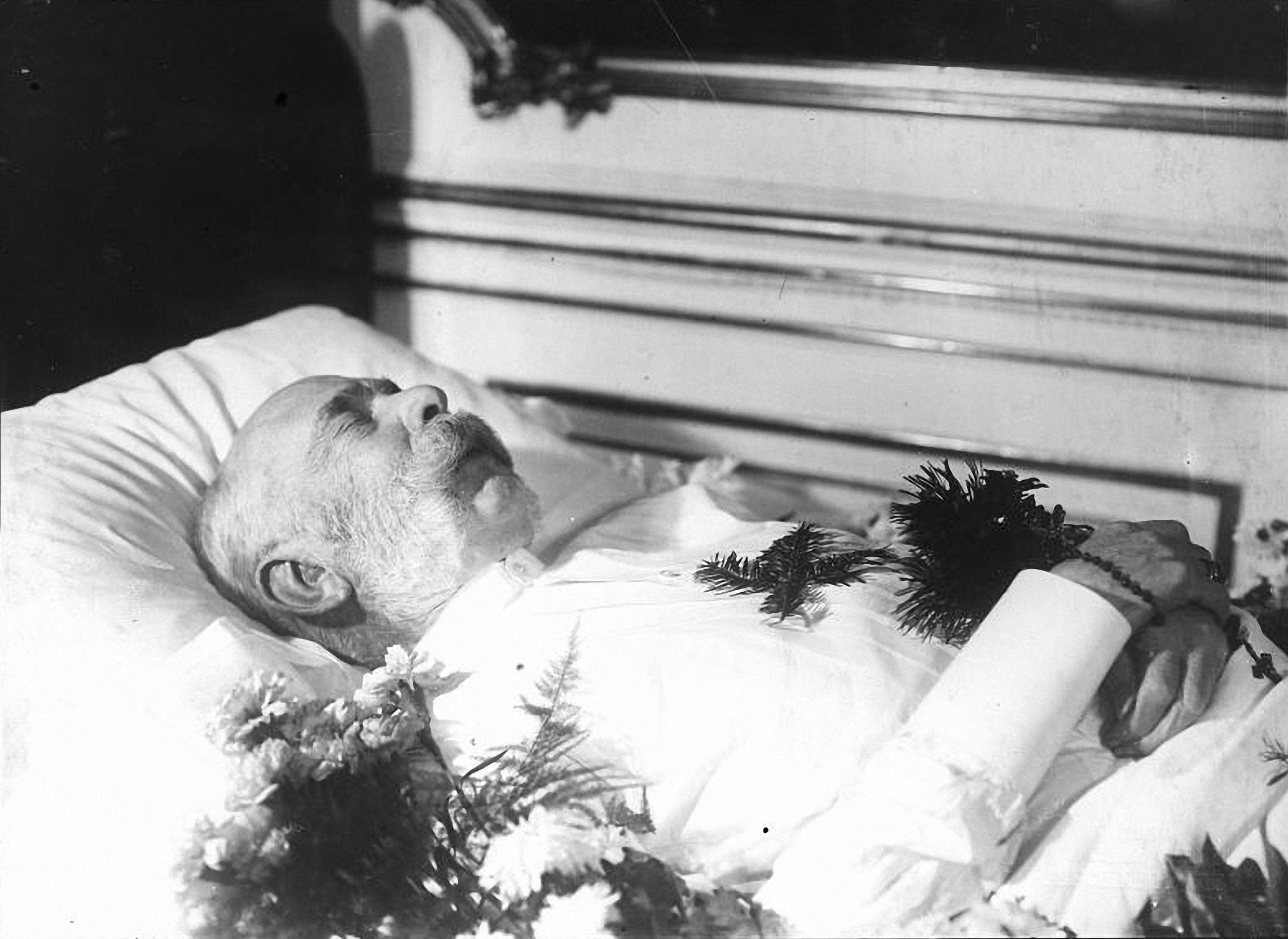
Story Highlights
- historical event: On this day emperor Francis Joseph suddenly died. It was quite unexpected given that, just the previous day, he was performing his usual activities. His body was embalmed and buried in the famous Imperial crypt beneath the Capuchin Church and monastery in Vienna.
Emperor and King Francis Joseph, ruler of the entire Austro-Hungarian Monarchy, died on this day in 1916. He died at the advanced age of 86 years. He was only 18 years of age when he came to the throne, and so long-lived that his reign became one of the longest in all of world history. In fact, he ruled for almost a full 68 years.
Francis Joseph was married to his cousin Elisabeth (“Sissi”). They had only one son, Crown Prince Rudolf, who died in mysterious circumstances at Mayerling, in 1889. This death had serious consequences for Francis Joseph, and another blow was caused by the murder of his wife Sissi nine years later.
The emperor died at the famous Schönbrunn Palace in Vienna. A medical report written the day before his death describes his condition. In the morning, he had a temperature of 38 °C, and that evening 37.8 °C. He hadan inflammation in the right lung in addition to chronic bronchitis. His heart was functioning well, he was breathing evenly, and his appetite was somewhat reduced.
Despite the temperature, the emperor did not rest the day before his death; indeed, he actually worked. That day he received in audience the Prince of Montenuovo (one of the most respected people in the court, also interesting due to the fact that he was the grandson of Mary Louise, Napoleon’s wife). He also received few generals, and Field Marshal Archduke Friedrich – who held the position of Supreme Commander of the Austro-Hungarian Army. This happened in the middle of World War I and the war-related affairs were, of course, crucial. He kept working until evening.
On this day the emperor suddenly died. It was quite unexpected given that, just the previous day, he was performing his usual activities (he was otherwise known for his energy). His body was embalmed and buried in the famous Imperial crypt beneath the Capuchin Church and monastery in Vienna. The crypt is now open to visitors. It can be found in the brochures under the name Kaisergruft or Kapuzinergruft. It contains the remains of 145 members of the Habsburg dynasty, including 12 emperors and 18 empresses. Some of the sarcophagi are indeed richly decorated.




